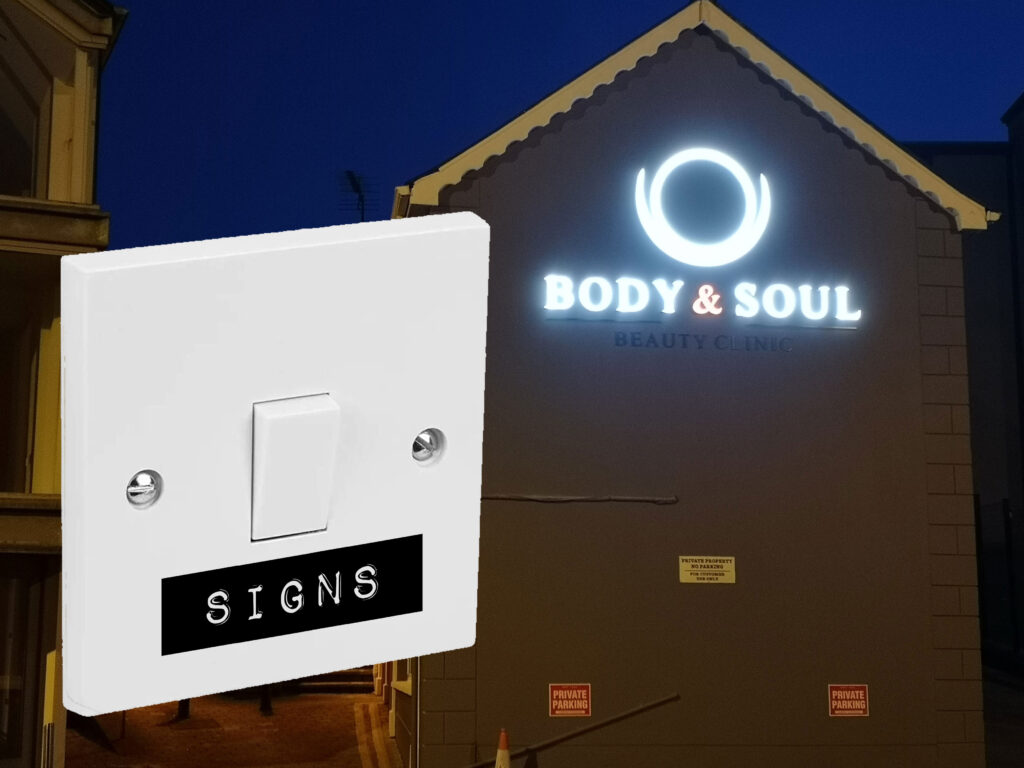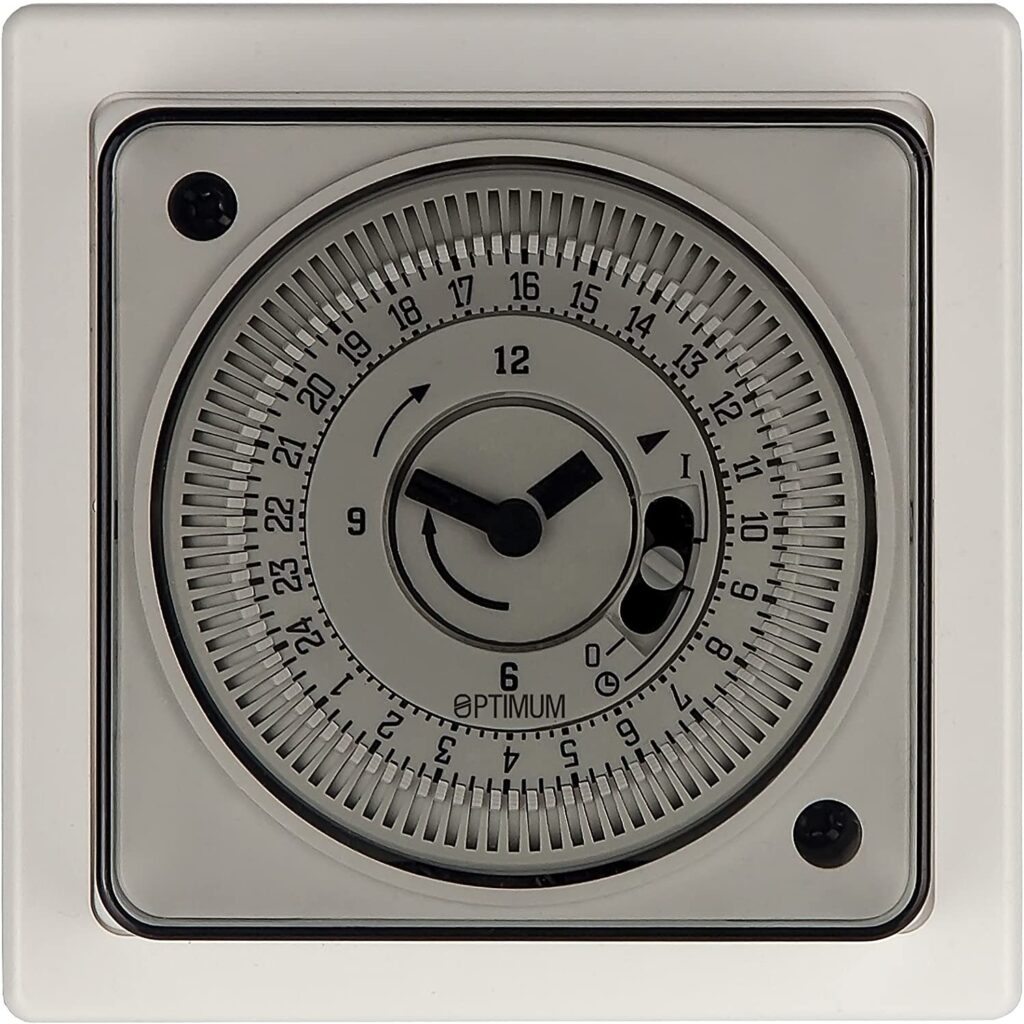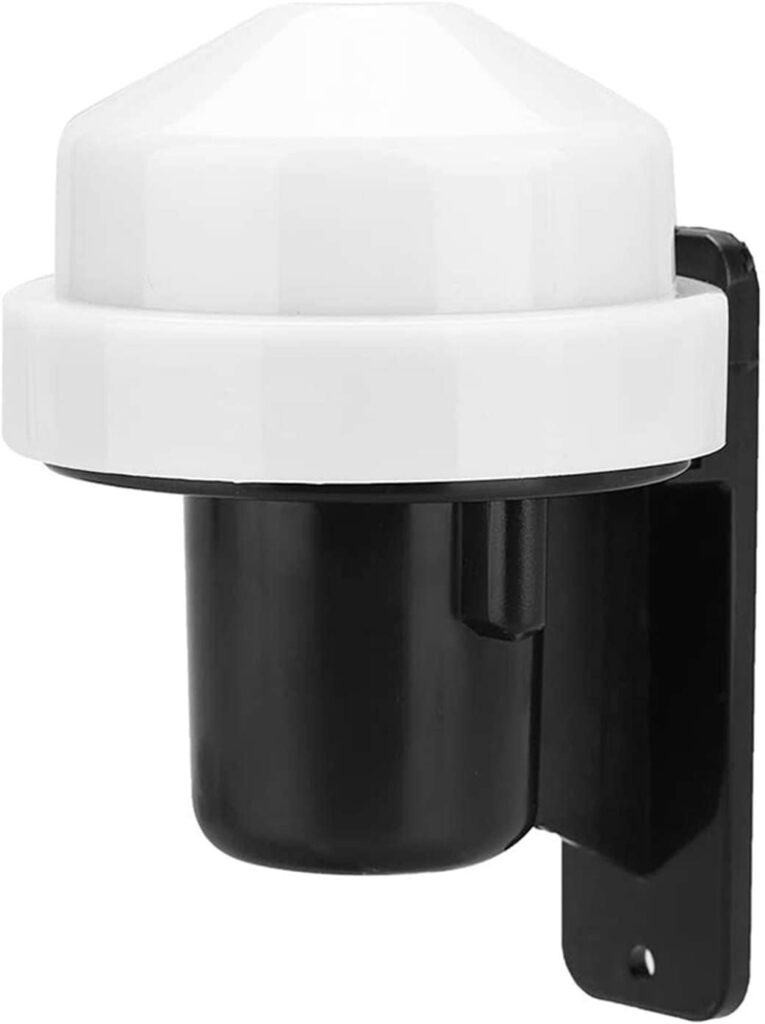Time switch
Installing a time switch or timeclock will help to automate the control of your signs, and is a step up from manual switching in that at least the sign will turn on and off daily.
Time switches are available in analogue (like the one shown) or digital versions, with some even being able to turn the sign on and off multiple times a day or at different times on different days.
However there is a major drawback with this method too.
Hours of darkness change with the seasons. Typically, where we are based, signs will need to come on at around 4pm in mid winter. However in mid summer it will not be dark until nearer 11pm. Consequently if you program your time clock for winter hours of darkness, you will be using power unnecessarily for up to seven hours a day in summer.
You could adjust the time clock programming, but as it's a gradual change between seasons, you would need to reprogram at least once a week for effective and economical control.





